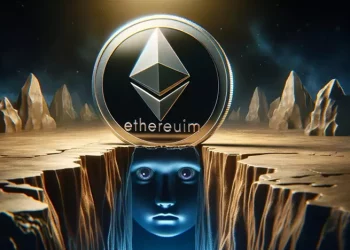In the rapidly evolving digital landscape, the term “Metaverse” has emerged as a game-changer, offering immense potential for revolutionizing various sectors. In particular, the educational domain stands to gain significantly from the immersive and interactive possibilities that the Metaverse brings to the table. This article delves into the ways the Metaverse can transform education, highlighting key facets and benefits that educators and students can harness.
Redefining Classroom Interactions
The Metaverse has the power to revolutionize classroom interactions by creating a virtual environment that transcends the boundaries of physical classrooms. This digital realm fosters a sense of presence and engagement, enabling students and educators to interact as though they are in the same room. Here’s how:
1. Immersive Virtual Classrooms: Within the Metaverse, educators can design immersive virtual classrooms where students gather, and learning materials are readily accessible. These virtual spaces mimic the real-world classroom experience, allowing for face-to-face interactions and collaborative learning.
2. Global Reach: The Metaverse transcends geographical limitations, enabling students from different corners of the world to convene in a shared virtual space. This expanded reach can facilitate diverse perspectives and cultural exchanges, enriching the educational experience.
3. Interactive Learning: In the Metaverse, traditional teaching materials can be transformed into interactive 3D objects, enhancing the learning process. Students can manipulate these objects, gaining a deeper understanding of complex concepts.
See Also: Can You Access the Metaverse with Your Phone: A Full Guide
Personalized Learning Journeys
Metaverse-based education empowers learners with personalized learning experiences. The ability to tailor content to individual needs and preferences is a game-changer in education. Here’s how it works:
1. Adaptive Learning: Metaverse platforms can utilize AI algorithms to assess each student’s progress and adapt the content accordingly. This ensures that learners receive material suited to their level and learning style.
2. Diverse Learning Paths: Students can choose from various learning paths, allowing them to explore topics of interest at their own pace. This flexibility promotes autonomy and a love for learning.
3. Real-time Feedback: The Metaverse offers real-time feedback, enabling students to track their performance and make improvements. Educators can also intervene when necessary, offering guidance and support.
Enhancing Practical Skill Acquisition
The Metaverse is not limited to theoretical learning. It can be a powerful tool for acquiring practical skills and hands-on experience:
1. Virtual Laboratories: In science and technical education, students can perform experiments and simulations in virtual laboratories. This hands-on experience is invaluable, particularly when in-person labs are not feasible.
2. Professional Simulations: The Metaverse can simulate real-world professional scenarios, enabling students to practice skills in a risk-free environment. This is particularly beneficial in fields such as healthcare and aviation.
3. Artistic Exploration: For creative fields, the Metaverse provides a canvas for artistic exploration. Students can create, exhibit, and share their work, fostering creativity and collaboration.
Fostering Inclusivity and Accessibility
One of the most remarkable aspects of the Metaverse is its potential to make education more inclusive and accessible to a broader range of individuals:
1. Accessible Learning Materials: Metaverse platforms can provide accessible learning materials for individuals with disabilities, ensuring that education is equitable and caters to diverse needs.
2. Diverse Learning Styles: The interactive and immersive nature of the Metaverse accommodates various learning styles, making education engaging for everyone, including visual, auditory, and kinesthetic learners.
3. Affordability: The Metaverse can reduce the cost of education by eliminating the need for physical infrastructure. This affordability can open doors to education for underserved communities.
Building a Global Learning Community
The Metaverse has the potential to create a global learning community. Here’s how it fosters collaboration and knowledge sharing:
1. Cross-border Collaboration: Students and educators from around the world can collaborate on projects, research, and discussions. This diverse interaction enriches the educational experience.
2. Professional Networking: The Metaverse can serve as a platform for students to build professional networks and connect with experts in their chosen fields, providing valuable career opportunities.
3. Knowledge Sharing: Educational institutions can host conferences, seminars, and workshops within the Metaverse, allowing for the seamless exchange of knowledge and ideas.
In conclusion
The Metaverse is poised to transform education in unprecedented ways, offering immersive, personalized, and inclusive learning experiences. As this digital frontier continues to evolve, educators and learners have a world of possibilities at their fingertips. Embracing the Metaverse in education represents a giant leap towards a future where knowledge knows no boundaries, and learning is a truly global endeavor.
Related topics:

















